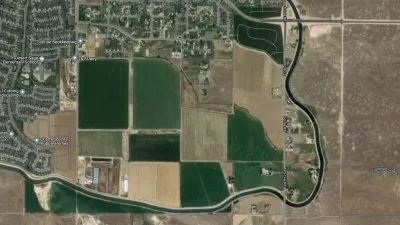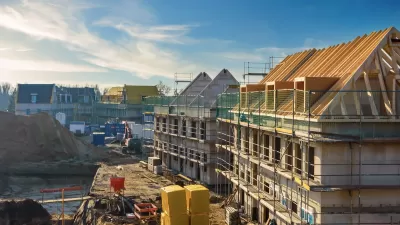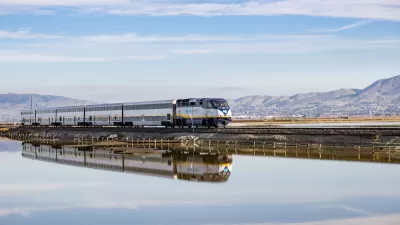What is this thing we do called planning? Are we really planning or just reacting? And visioning? What’s that all about? These the questions that came to mind as I was reading yesterday’s - Ineffective Local Planning Efforts Push County To Seek Greater Control. And, also, how many articles like this are published on a daily basis?? If you were to add them all up from across the country, I’m sure the number wouldn’t be insignificant.
What is this thing we do called planning? Are we really planning or just reacting? And visioning? What's that all about? These the questions that came to mind as I was reading yesterday's - Ineffective Local Planning Efforts Push County To Seek Greater Control. And, also, how many articles like this are published on a daily basis?? If you were to add them all up from across the country, I'm sure the number wouldn't be insignificant.
To plan anything requires a goal; or at least a touchstone. With population growth, migration, changing demographics and subsequent market demands, how can an area's goal or vision be reached, especially, if it is to take 10 or 20 years to achieve the vision in the first place? How many changes will have occurred in that time frame? How would you then define success?
I don't know if there are ‘correct' answers to these questions, but it seems they are willfully ignored in many of today's conversations. The planning and development model seems to have changed from helping people create the communities they want to live in to one dominated by short-term interests. Get in, make a buck, and get out. Or if you're already living there, its wait until you can't possibly stand it any longer, then throw in the towel and to move where growth is less imminent. (Mind you, that's after cashing out for as much as possible.) Our individual self-interests operate at a different speed than what is sustainable and as long as we don't each have to pay for the consequences of our actions, then why not take all you can get?
It's the knowing, in the back of one's mind, that plans change over time and the resulting uncertainty drives people to make decisions that satisfy their short-term interests; even though it will likely cause them harm or inflict greater cost in the long run. Consider this: You invest in the stock market to build some wealth, maybe even to put your kids through college. You buy shares in a mutual fund; your fund owns stock in a homebuilding company. Now, ‘your' homebuilding company wants to put houses up in your neighborhood. But you don't want more houses there. But you do want to put your kids through school, right? Which will it be? Ok, put up the houses, I'll move somewhere else with a view. A simplistic example, sure, but it happens everyday.
There are too many disconnects and crossroads in today's planning and development to be sustainable perhaps even successful?

Manufactured Crisis: Losing the Nation’s Largest Source of Unsubsidized Affordable Housing
Manufactured housing communities have long been an affordable housing option for millions of people living in the U.S., but that affordability is disappearing rapidly. How did we get here?

Americans May Be Stuck — But Why?
Americans are moving a lot less than they once did, and that is a problem. While Yoni Applebaum, in his highly-publicized article Stuck, gets the reasons badly wrong, it's still important to ask: why are we moving so much less than before?

Using Old Oil and Gas Wells for Green Energy Storage
Penn State researchers have found that repurposing abandoned oil and gas wells for geothermal-assisted compressed-air energy storage can boost efficiency, reduce environmental risks, and support clean energy and job transitions.

Updating LA’s Tree Rules Could Bring More Shade to Underserved Neighborhoods
A new USC study finds that relaxing Los Angeles’ outdated tree planting guidelines could significantly expand urban tree canopy and reduce shade disparities in lower-income neighborhoods, though infrastructure investments are also needed.

California's Canal Solar Projects Aim to Conserve Resources and Expand Clean Energy
California’s Project Nexus has begun generating electricity from solar panels installed over irrigation canals, with researchers and state agencies exploring statewide expansion to conserve water and boost clean energy production.

HHS Staff Cuts Gut Energy Assistance Program
The full staff of a federal program that distributes heating and cooling assistance for low-income families was laid off, jeopardizing the program’s operations.
Urban Design for Planners 1: Software Tools
This six-course series explores essential urban design concepts using open source software and equips planners with the tools they need to participate fully in the urban design process.
Planning for Universal Design
Learn the tools for implementing Universal Design in planning regulations.
Heyer Gruel & Associates PA
City of Moreno Valley
Institute for Housing and Urban Development Studies (IHS)
City of Grandview
Harvard GSD Executive Education
Salt Lake City
NYU Wagner Graduate School of Public Service
City of Cambridge, Maryland






























